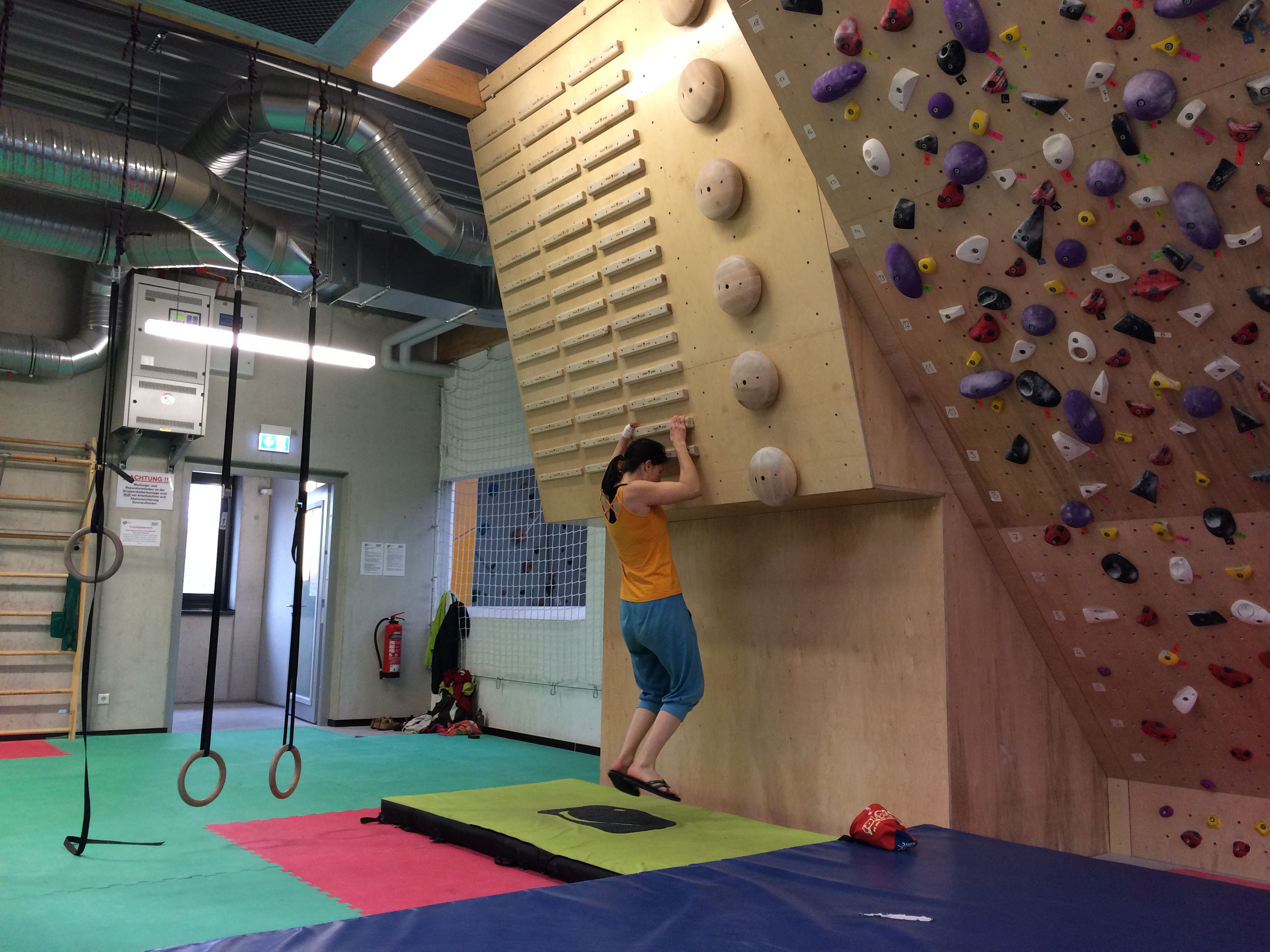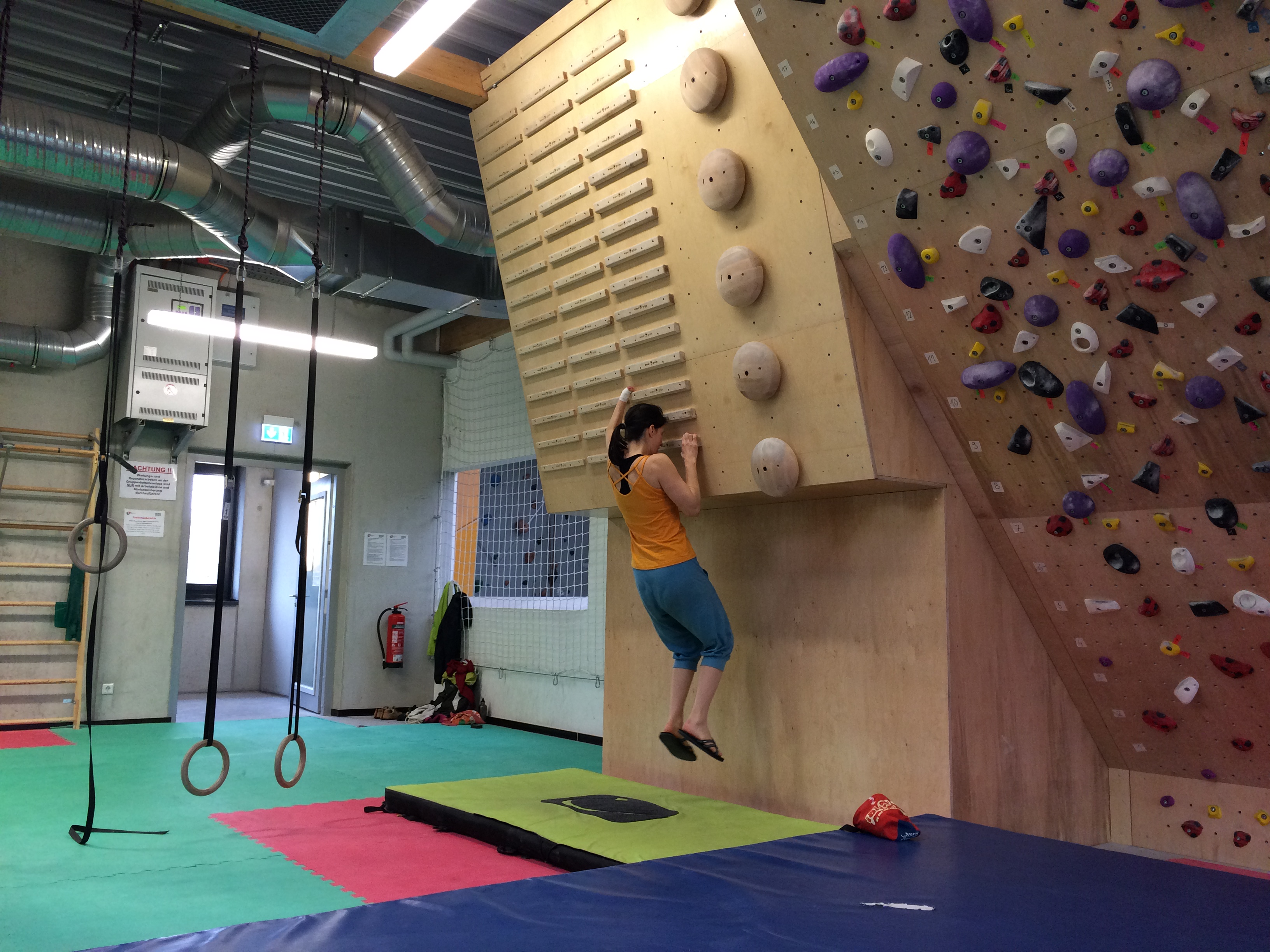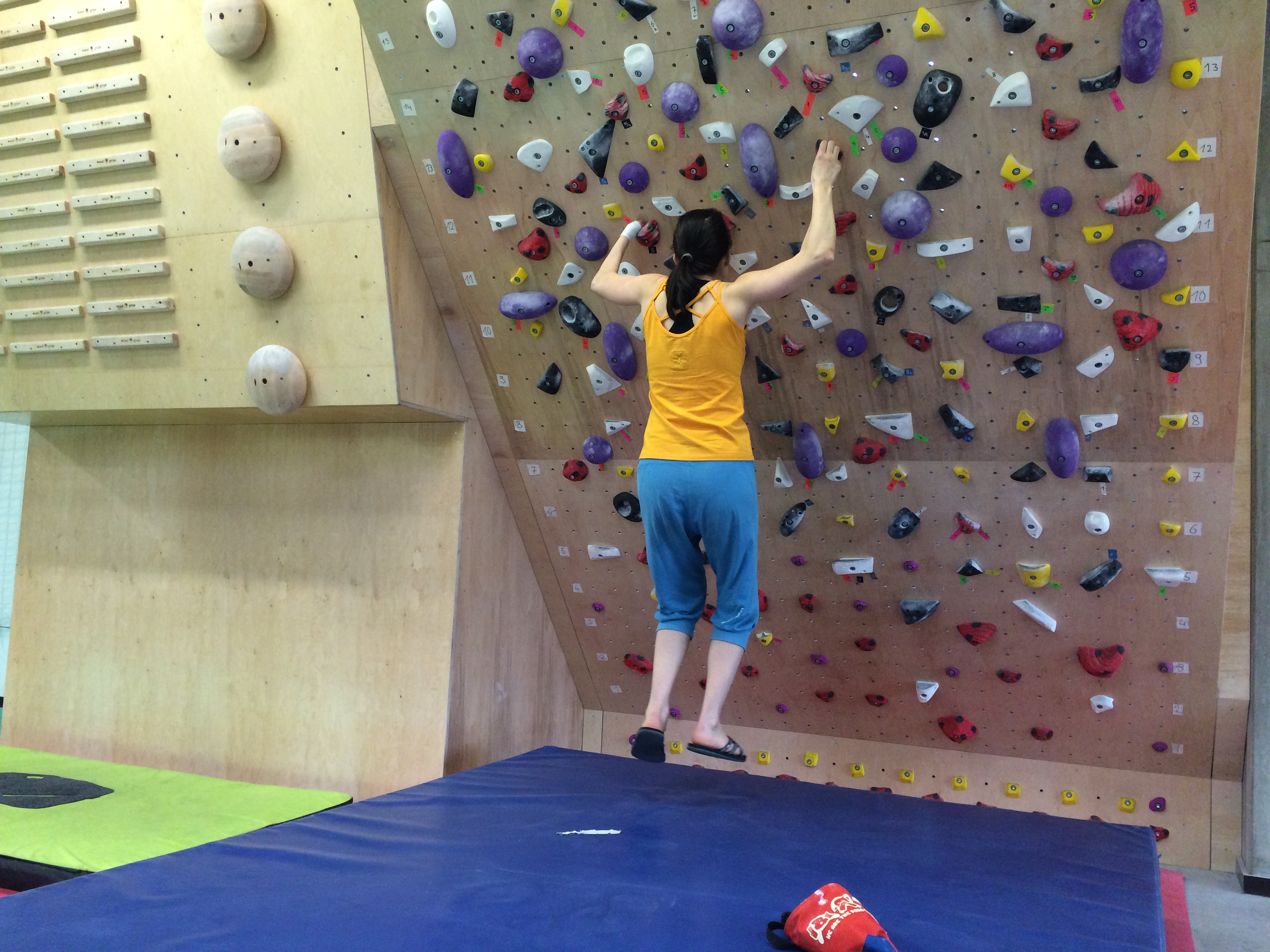Injuries and progress
Ever since I started climbing in 2012, I have kept wondering about how far I can push my climbing without fingers on my left hand. For a long time, I thought that 6a (VI+) would be a limit. Now, I know for sure that my limit of possibility lies somewhere beyond 6c (VIII-). This story is about my hilly road of progress towards pushing my limits.
Okay, maybe it’s actually about how my injuries have helped me push my limits. But in my case, these two are almost the same.
For a long time, climbing was my only training for climbing. Sometimes I did some warm up and cool down exercises, but otherwise it was just about getting on the wall and having fun. Then in 2015, as a sure sign of aging, I experienced my first episode of crippling lower back pains. In the hope of keeping them at bay, I started doing regular core exercises.

It didn’t take long to feel the effect of these exercises on my climbing. I clearly remember when the realization hit me that I can actually lead climb overhangs! (Top-roping is not really an option in my climbing hall in Berlin.)
As I started climbing harder and steeper routes, I got a bit over-ambitious, and made my back problems a climbing-related chronic issue (probably because my climbing style relies a lot on body tension to be able to hold myself with my left arm). I was still doing exercises and visiting a physiotherapist, but it didn’t really help. There is so much different advice out there, but I find it really difficult to find a personalized solution.
I spent almost all of 2016 climbing with my back problems, which did not bother me during climbing, but I was often in pain when I had to sit. Then, things began to go downhill after a hard workout. I reached rock bottom after a cramp in my lower back on a slab boulder problem in December 2016. I was not able to stand up and walk properly for over a week, and not able to sit for 3 weeks. Climbing was out of the question for 4 long weeks.
Luckily, the pain was not without a gain: I finally found some helpful advice! It turned out that my deep fascia were stuck (I didn’t even know I had them!), and were causing much of my back pain and immobility as the last stand of support to my worn out back muscles. Rolling on a tennis ball (or a foam roller) helps to unstuck these fascia and relieve the pain (but the real fix will have to do with working on other muscle groups). Proper warm-up, cool-down and stretching exercises are now also crucial part of my training in order to get more mobility into my lower back and hip area.

Even though I previously thought that I was taking care of my body, it appeared that I almost completely wore it down with my climbing training. The injury was a painful but good wake-up call to change my routines.
I was finally on the road to recovery, when a silly accident blew me off course again during a friendly lead climbing competition in Hungary. I had an unfortunate hard fall in the rope, and sprained my ankle. I was upset at the circumstances of the new injury, and that it prevented me from trying half of the competition routes, let alone from standing on my injured foot for days. I was also again out of climbing for a few weeks.
Looking back at this latest injury now, after 7 weeks, I’m inclined to view it more positively. Having to rest my feet, I decided to train my upper body by hanging on climbing holds and on the campus board (these provide a more adjustable imbalance in my two sides compared to pull-up bars and fingerboards). My fingers and forearms lost some power during my previous climbing break, but I also discovered that my shoulders are quite weak.
Now, even after just a few weeks of hanging training, I already feel stronger. It’s great to feel my arms supporting me more during my climbing sessions. But most importantly, relying more on my upper body also relieves some of the stress I usually put on my lower back. So it pays off doubly!
I consider myself lucky that these two events were so far my most serious climbing injuries. Nonetheless, I found them very annoying because they temporarily limited my range of mobility. However, I’m also grateful to them, because they forced me to shift my focus and experiment with new approaches. So in a way, they coached me to become a better climber, and hopefully also to be more respectful towards my body!
◊
NOTE: I don’t think that one should wait for an injury to find more efficient and healthy ways of training. It is just the way it happened to me. I think it is important to experiment with different training methods while being mindful about one’s own body in order to avoid injuries.
I also do not want to claim that power is all that matters to improve one’s climbing ability. Climbing technique is at least as important, and flexibility is also useful. However, I think that power (and flexibility) are currently where I can make the most gains in my climbing.
Finally, here is a short video about my new power endurance project to test my progress:



One thought on “Injuries and progress”
Dear Melinda,
It is very impressive to see this and interesting to read about your development of awareness in your blog! In the past 5 years, I have been coping with an illness, which has also finally shifted my aspirations & ways of thinking towards certain aspects in my life.
Good luck with all your endeavours!
Kind regards,
Evelyne